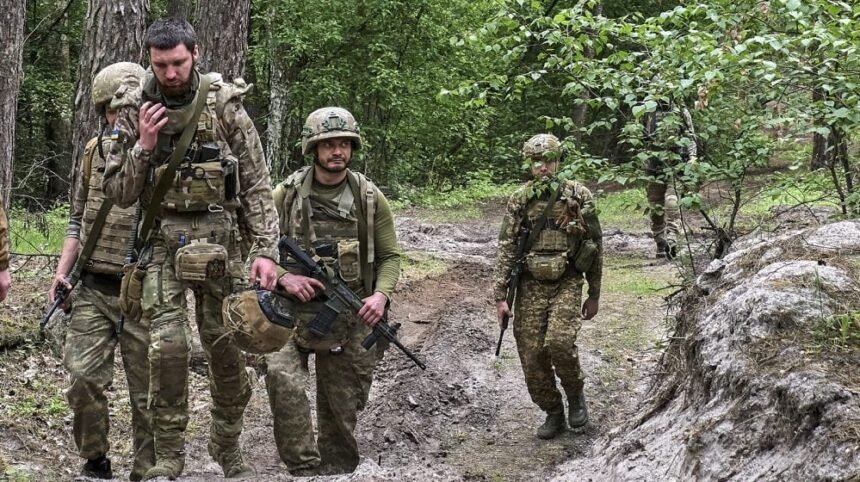The prospect of a temporary truce, let alone a definitive end to the war between Russia and Ukraine, remains elusive following the second round of direct negotiations in Istanbul on Monday. Instead, the Kremlin continues to demand broad territorial, military, and geopolitical concessions from Ukraine and the West while intensifying its offensive along the front lines. Reports indicate that President Vladimir Putin genuinely believes Russia is winning.
By maintaining diplomatic contacts without halting military operations, Moscow can claim readiness for peace while using the battlefield as a tool for pressure. However, more than three years after the full-scale invasion of Ukraine, does Russia truly possess the resources to sustain the war for as long as needed? The Moscow Times has analyzed the current situation on the ground.
Ukrainian military analyst Ivan Stupak believes Russian officials are bluffing when they claim the country can wage war for years. “No one can fight a war for years. Russia has many resources and many people, but it also has its limits,” Stupak, an advisor to Ukraine’s national security committee, told The Moscow Times.
Russian forces have intensified their offensive in northeastern and eastern Ukraine in recent weeks. This follows Putin’s call for a “buffer zone” along the Russian-Ukrainian border, with Russian troops seizing villages in the Sumy region, advancing towards Kharkiv, and attempting to encircle the strategic city of Pokrovsk in the Donetsk region. According to the Ukrainian open-source intelligence group Deep State, the Russian army carried out an average of almost 184 attacks daily in May, a 19% increase compared to April.
Pavel Aksyonov, a military analyst for BBC’s Russian service, states that Russia is concentrating forces to strike at weak points in Ukraine’s defenses and breach front lines. “The goal of the Russian army is to exhaust Ukrainian forces and prevent them from sending reinforcements to key locations. However, the capture of Sumy city is unlikely. They don’t have enough forces for that,” Aksyonov told The Moscow Times.
Stupak noted that the Ukrainian army is now more vulnerable after exhausting battles in Russia’s Kursk region, from which it withdrew earlier this year following a daring cross-border incursion last summer. “During the operation in Kursk, we suffered heavy losses in both personnel and equipment. We transferred many units there, including from Donetsk. Now the front in Donetsk is weakening, and Russia is exploiting that. They are currently trying to encircle Pokrovsk and Kostiantynivka and are sending additional forces there,” Stupak said, noting that the front is still holding for now.
Despite these advances, Western and Ukrainian analysts warn that Russian gains may not be sustainable. Reports suggest the Kremlin is facing significant equipment losses and increasing logistical pressures. A Pentagon report, cited by The Washington Post, estimates that Russia has lost over 10,000 military vehicles, 3,000 tanks, and approximately 250 aircraft since the start of the war. Soviet-era armored vehicle stockpiles are almost depleted, and current tank production—around 200 annually—is unlikely to compensate for these losses anytime soon.
There are also signs of strain and exhaustion on the battlefield. Russian soldiers are increasingly launching attacks using civilian vehicles, including—as one video circulating on Russian Telegram channels shows—even a luxury Porsche Cayenne SUV. These vehicles are often destroyed by Ukrainian drones.
Despite heavy personnel losses, Russia manages to maintain its troop numbers through aggressive recruitment campaigns and changing tactics. According to military analysts, Moscow has significantly increased drone production and heavily relies on cheap, mass attacks to probe for weak points in Ukrainian defenses. “They are concentrating forces, massively using drones, and targeting Ukrainian logistics before moving forward,” Aksyonov said.
Nevertheless, he added, it is unlikely that Russia will achieve a breakthrough that would decisively turn the tide of the war with current resources. According to current estimates, at this pace, it would take Russia up to three years to capture Donetsk alone. Capturing the remaining regions, analysts say, would require significantly more time, resources, and human casualties.
For the Kremlin, however, ideological and political factors outweigh military logic. “Perhaps Russia lacks resources, but that does not change their will to wage war,” said Pavel Luzin, a Russian military expert. “For the Russian government, it is a matter of survival and legitimacy. Russia desperately needs a break in fighting, but politically cannot afford that break. Ukraine, on the other hand, is not seeking peace at any cost.“
Luzin suggested that Russia hopes time and exhaustion will work in its favor. If Western military and financial support for Ukraine were to collapse, or if internal pressure on Ukrainian President Volodymyr Zelenskyy to seek peace were to increase, Russia could gain an advantage at the negotiating table. Although US military aid has indeed slowed, European countries continue to support Kyiv. Ukraine is also rapidly developing its own defense industry and increasingly producing weapons domestically, Aksyonov said.
“All these mass attacks on civilians are still happening because the Kremlin is probably waiting for Ukrainians to tire of the war and start pressuring Zelenskyy to agree to peace at any cost. But that has not happened yet,” Stupak concluded.







